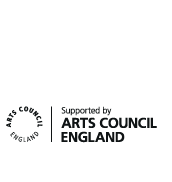Made in China. Those three words are carried around on about every product that plays part in our daily routine. But despite their ubiquity, very little is known about the real meaning of these words. Even I, with a degree in industrial design, know very little about the reality of outsourcing mass-manufacturing to the far east. Hence my excitement when I got the opportunity to visit TopLed in Shenzhen, the company that manufactures the led panels for the Bus-Top installations. (The visit was part of a personal trip visiting factories in the South of China for a new project I am working on. It was not part of nor funded by the Bus-Tops project.)
In 1979, Shenzhen was a fishing village on the shores of the Pearl river with 30 000 inhabitants. It had just become one of China’s special economic zones, a becoming physical of Deng Xiaopin’s paradoxical intentions of bringing capitalism into communist China. After 30 years of economic boom, it has an official population around 10 million, and counting. Estimates of its real size sometimes reach double. The city is younger than I am and bigger than London, give or take a little. Outsourcing mass manufacturing has created unprecedented urban conditions in the Pearl river delta. And because of Shenzhen’s proximity to other metropoles like Guangzhou and Dongguan, the whole area might soon merge into a mega city of 85 million people.
The energy that comes from a booming yet politically complicated place makes my brain tickle. I wonder if Europe has become the retirement home of the world.
The whole area oozes manufacturing. Driving to the factories in Guangzhou, I immediately notice all the trucks, cars and even little scooters driving on and off with raw materials or (half)finished goods. Like a gigantic beehive of manufacturing.
After decades of booming, cheap labour is running out in China’s South-East which means working conditions are improving. Like the whole city, the workers are often young. The atmosphere in the factories is friendly, relaxed almost. It seems in contrast with the high production volumes, and with my western expectations.
In the TopLed factory, I am being shown around by Macon who we has been helping us throughout our engineering and prototyping stage. He proudly shows me modern machinery that will replace manual labour. But it’s broken now so on a table nearby, a group of girls is putting the led’s in the panels by hand.
Macon is about my age and we go to a bar in the evening. He doesn’t go to bars very often. We order strange combinations of strong drinks. It is fun.
Made in China. Those three words are carried around on about every product that plays part in our daily routine. But despite their ubiquity, very little is known about the real meaning of these words. Even I, with a degree in industrial design, know very little about the reality of outsourcing mass-manufacturing to the far east. Hence my excitement when I got the opportunity to visit TopLed in Shenzhen, the company that manufactures the led panels for the Bus-Top installations. (The visit was part of a personal trip visiting factories in the South of China for a new project I am working on. It was not part of nor funded by the Bus-Tops project.)
In 1979, Shenzhen was a fishing village on the shores of the Pearl river with 30 000 inhabitants. It had just become one of China’s special economic zones, a becoming physical of Deng Xiaopin’s paradoxical intentions of bringing capitalism into communist China. After 30 years of economic boom, it has an official population around 10 million, and counting. Estimates of its real size sometimes reach double. The city is younger than I am and bigger than London, give or take a little. Outsourcing mass manufacturing has created unprecedented urban conditions in the Pearl river delta. And because of Shenzhen’s proximity to other metropoles like Guangzhou and Dongguan, the whole area might soon merge into a mega city of 85 million people.
The energy that comes from such booming yet politically complicated place makes my brain tickle. I wonder if Europe has become the retirement home of the world.
The whole area oozes production. Driving to the factories in Guangzhou, I immediately notice all the trucks, cars and even little scooters driving on and off with raw materials or (half)finished goods. Like a gigantic beehive of manufacturing.
After decades of booming, cheap labour is running out in China’s South-East which means working conditions are improving. Like the whole city, the workers are often young. The atmosphere in the factories is friendly, relaxed almost. It seems in contrast with the high production volumes, and with my western expectations.
In the TopLed factory, I am being shown around by Macon who we has been helping us throughout our engineering and prototyping stage. He proudly shows me modern machinery that will replace manual labour. But the machines are broken now so on a table nearby, a group of girls is putting the leds in the panels by hand.
Macon is about my age and we go to a bar in the evening. He doesn’t go to bars very often. We order strange combinations of strong drinks. It is fun.





Andy
2 months ago
I would love to go. Did you meet Mr Allen?
Tuur
2 months ago
mr Allen disappeared about 6 months ago. mr Macon is the new mr Allen. It seems address books (and maps) make little sense in a place that moves on so fast.